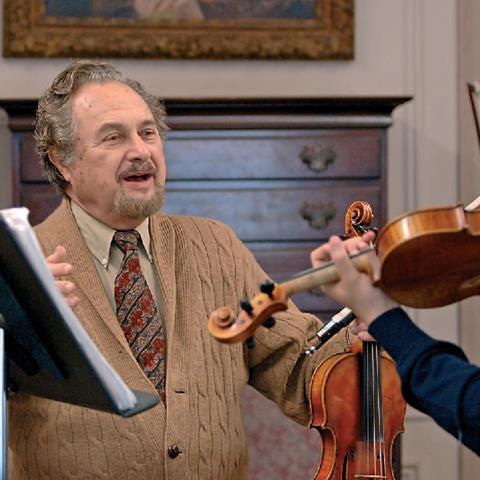The American maestro discusses the importance of developing a distinctive tone

Good teaching is about much more than correct position and technique. Once my students are in control of their instrument, I begin a rigid routine of what I call 'tearing a page apart', working on phrasing and punctuation, trying to make a line interesting, showing them that they’re not playing notes but are like an actor or actress reading lines.
Each person must read the line with conviction and meaning to make it interesting. Young people aren’t used to that approach; they think it’s a piece of cake once they learn the notes.
I try to stimulate a more profound understanding of the composer’s intentions and the importance of the recreative role of the artist to make the music come to life. You cannot hope to become a thorough musician without immersing yourself in music, not just a particular composer’s concerto but all the music of that composer.
You also should know the composer’s history and something of the time and place in which the composer lived. I encourage my students to visit museums, see movies and go to the theatre. Reading is very important also. I want them to sharpen their brains as well as their musical instincts.
Every artist must have a temperament, and something individual that will come through in performance. I emphasise tone, not technique, because it’s so important. I want them to develop the fullest capacity for making a varied sound, then apply it all to one particular phrase; for example, increasing the intensity of the vibrato on the D in the first line of Brahms’s Sonata in D minor op.108. You wouldn’t use the same intense vibrato on the A as you would on the D. You must have a concept and a sound in your ear that you wish to produce. Violin playing is like singing, and the tasteful use of portamento is a necessary skill to achieve expressive playing.
Read Aaron Rosand's blog: How to produce a beautiful tone
Photo: Peter Checchia
This article was first published as part of a larger feature in The Strad’s September 2007 issue.





























No comments yet